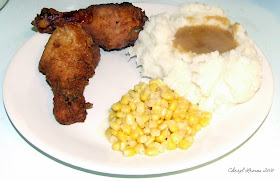
Everybody knows that everything tastes better when its fried. Well, that’s not exactly true . . . I’m not a fan of deep fried pickles and the thought of a deep fried Twinky makes me want to hurl . . . but generally speaking, if you fry it’s good.
Admittedly, it's not the healthiest way to eat food . . . especially when your frying something already unhealthy . . . uhm . . . deep fried twinky . . . ew!
For the sake of safety, a few good things to know about deep frying in oil are the smoke, flash and fire points.
If you plan on recycling your frying oil for future use, knowing the smoke point is really important. Different oils have different smoke points. The smoke point of a particular oil is the temperature at which the oil begins to decompose and visible fumes (smoke) are given off. The oil begins to breakdown creating acreolein , an obnoxious-smelling compound.
Each and every time you deep fry you lower the smoke point of the oil permanently. Therefore, if you plan on reusing oil make sure that you select on with a high smoke point.
Approximate Smoke Points for common oils
Safflower 505 Degrees F
Sunflower 475 Degrees F
Soybean 465 Degrees F
Canola 460 Degrees F
Corn 455 Degrees F
Peanut 445 Degrees F
Sesame 420 Degrees F
Olive 375 Degrees F
Lards 360 – 400 Degrees F
The obvious danger in deep frying is the hot oil. Hot oil can catch fire. Knowing the smoke point will also warn you about, because of its proximity to, the flash point and fire point. An oil reaches its flash point at about 600 degrees F for most oils when tiny wisps of fire begin to leap from its surface. If the oil is heated to its fire point which is slightly under 700 degrees F for most oils), its surface will be on fire.
Never use water to put out an oil fire: the water will splatter the burning oil and spread it more quickly. Instead, smother the flames with a tight-fitting lid or sheet of aluminum foil. If the fire has spread outside the pan, suffocate it with baking soda or a fire extinguisher formulated for oil fires.
Homemade Crispy Fried Chicken
When frying chicken, crucial components are the skillet and the temperature of the oil. Use a heavy skillet – cast iron is perfect for frying chicken. The ideal frying temperature is about 365 degrees F – it’s best to determine the temperature with a frying thermometer or by dropping a 2" square of bread in the hot oil - it should turn golden brown in about 60 seconds. If the oil is too hot; the result will be burned, undercooked chicken. And, oil that is not hot enough will result in soggy chicken.
2 Cups Buttermilk
2 Packages Dry Italian Dressing Mix (I Use Zesty)
1 ½ Cups Flour
3 Lb Chicken Fryer Parts
1 1/2 Pints Vegetable Oil, Shortening Or Lard
Dry Pancake Mix (Bisquick)
In a plastic bag or bowl, pour the buttermilk over the chicken and let the chicken “marinate” in the refrigerator for least an hour. (I use the buttermilk that is leftover from making butter)
In a mixing bowl, combine Italian dressing mix & flour. Dredge the chicken pieces in the flour and place the coated parts in the refrigerator for one hour. Reserve the buttermilk.
 |
| First Coating |
Dip chicken pieces into the buttermilk and then dip chicken in pancake mixture to coat lightly. Shake off any excess flour.
Begin adding chicken pieces to skillet, being careful not to overcrowd. Do two or more batches, if necessary. Cover and cook for 7 minutes.
Carefully turn and cook, uncovered, for an additional 7 minutes.
Preheat oven to 350F.
When all chicken pieces are cooked, transfer to roasting pan and bake at 350F for 1/2 an hour.
Note - USDA Recommended Safe Minimum Internal Temperature for chicken and poultry is 165 Degrees F










No comments:
Post a Comment